The world’s greenest football stadium
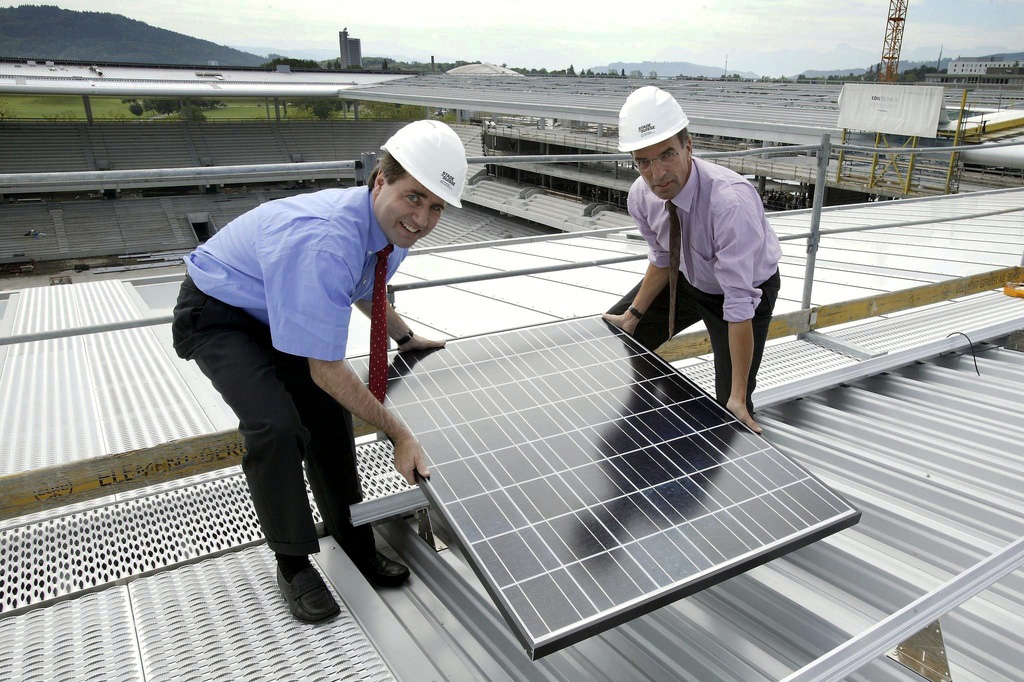
Bern’s Stade de Suisse is not just a football stadium. Home to shops, offices and cultural events, it also has the largest solar roof of any football stadium in the world.
Opened in 2005, its solar panels cover a total of 12,000 square metres. Although it has since been overtaken in size by Taiwan’s World Games stadium, in 2009, it still produces more power than any other.
Around 20,000 people usually descend on the Stade de Suisse for the matches of the capital city’s local team, FC Young Boys, one of the top teams in the Swiss Super League first division.
While football supporters may be keeping their eyes on the players on the pitch, for green energy fans the main attraction is hidden on the roof.
Tourist attraction
Since it came into service the stadium’s solar power plant has been transformed into a touristy-technological attraction for the wider public. Every year tens of thousands of people climb up to the stadium’s rooftop panorama “sun” room to see how sunlight is transformed into electricity.
They go up to see the photovoltaic cells, which produce 1.3 million kilowatts hours of electricity a year, enough to fuel 400 homes, explains Jakob Vollenweider, the head of solar and wind power projects at the FMB group, one of Switzerland’s main energy firms which has worked in renewable energies for 15 years.
“The efficiency rate of the panels is 15 per cent. That means that 15 per cent of the energy in the sunlight is transformed into electricity. At the moment it is a good result, especially because we obtained a good difference between the sale price and production cost,” he said.
For FMB it all began in 1999 with a power station at Mont Soleil, in the Jura region – the biggest in Europe at the time. In 2001, the firm built the world’s largest solar powered boat which still carries passengers on the lakes of Biel, Murten and Neuchâtel in western Switzerland.
“We also built a solar power station at the Jungfrau summit and have inaugurated the highest one in the world at the Petit Cervin [a 3,883 m peak near the Matterhorn]. In addition we are collaborating technically with Bertrand Piccard who is planning to travel around the world in a solar powered plane,” said Vollenweider. A model of the plane, named Solar Impulse, features on the roof of the Stade de Suisse sun room.
Doing well, could do better
The first stage of the station at the Stade de Suisse was built in 2005 to produce an annual amount of 800,000kW h. “We sold this power to private individuals, businesses and the city authorities. This sale was so successful that is enabled us to increase the potential output by more than 450,000 kW h in 2007,” said Vollenweider.
Three deciding factors were key to achieving the project. “Firstly, the customers seemed interested in buying solar power; next there was a lot of surface area available for implementing a solar power station; finally a football stadium attracts of people, which was a good opportunity to familiarise people with solar power.”
In 2005 the Stade de Suisse gained international fame after winning the European Solar Prize. “With this project we have been able to give a new impetus to solar power. There have even been, and continue to be, attempts to imitate us,” said Vollenweider.
There are three other football stadiums in Switzerland with smaller solar stations on their roofs: St Jakob’s in Basel (since 2001), Letzigrund in Zurich (since 2008) and SRG Arena in St Gallen (since 2009).
It’s good, but not enough, the environmental group WWF says. In a study carried out last year, the organisation found that Swiss football clubs did not have adequate environmental protection policies. Solar panels on a roof did not automatically mean that there was eco-friendly light inside and around a stadium.
Cost
In Bern around two per cent of the 2.5 million kW h that the stadium consumes annually, not only for football activities but also for offices and conventions, is solar, which is nine per cent of the total energy costs.
“Solar power is expensive. But the lighting of the pitch is covered by the two per cent of solar power that we buy,” said the stadium spokesman Peter Staudermann.
Of the 36 businesses present in the stadium’s commercial centre only the Coop supermarket uses solar power. “The other businesses could use it, but they don’t. It’s a question of cost,” said Peter Baumgartner, head of the Wankdorf Centre.
The issue of cost seems to be preventing a recommendation by football’s governing body Fifa from becoming reality. In 2007, Fifa stipulated that “energy-saving measures should be an integral part of the planning and building of a new stadium. This includes the use of solar power.”
In South Africa, where the sun shines 350 days of the year, none of the new stadiums hosting the 2010 World Cup are equipped with solar panels. But in Brazil there is a project to transform the 2014 World Cup venues into “solar stadiums”. Planners are citing the Stade de Suisse as a “successful model” but are concerned about the issue of price.
Vollenweider acknowledges that solar power is much more expensive than conventional energy. But he is convinced that it represents a unique alternative to fossil fuels.
“It is a renewable energy with enormous potential and a lot of research is being done into how to reduce the cost.”
Geraldo Hoffmann, swissinfo.ch (Translated by Jessica Dacey)
The sun gives off 40 billion kW h of solar power across Switzerland, which represents 220,000 times more than the annual energy consumption of the country.
Around 40,000 solar installations with a surface area of 350,000 m² of receptors tap into this source.
Solar power provides 0.3% of the energy needed for heating and 0.03% of total energy consumption in the country.
The total surface area of Switzerland’s roofs amounts to 400 million m². If they were all used, they would cover around a third of the country’s energy needs.
Construction: first stage inaugurated in 2005 and the extension in 2007
Annual production: 1.2 million kilowatt/hour, enough to power 44 homes.
Surface area: 12,000 m² for 7,000 solar panels
Longevity: 25-30 years
Cost: SFr10 million, which should be recouped by 2020

In compliance with the JTI standards
More: SWI swissinfo.ch certified by the Journalism Trust Initiative

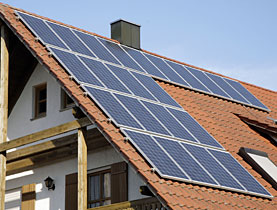
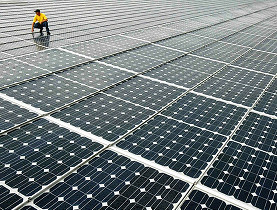
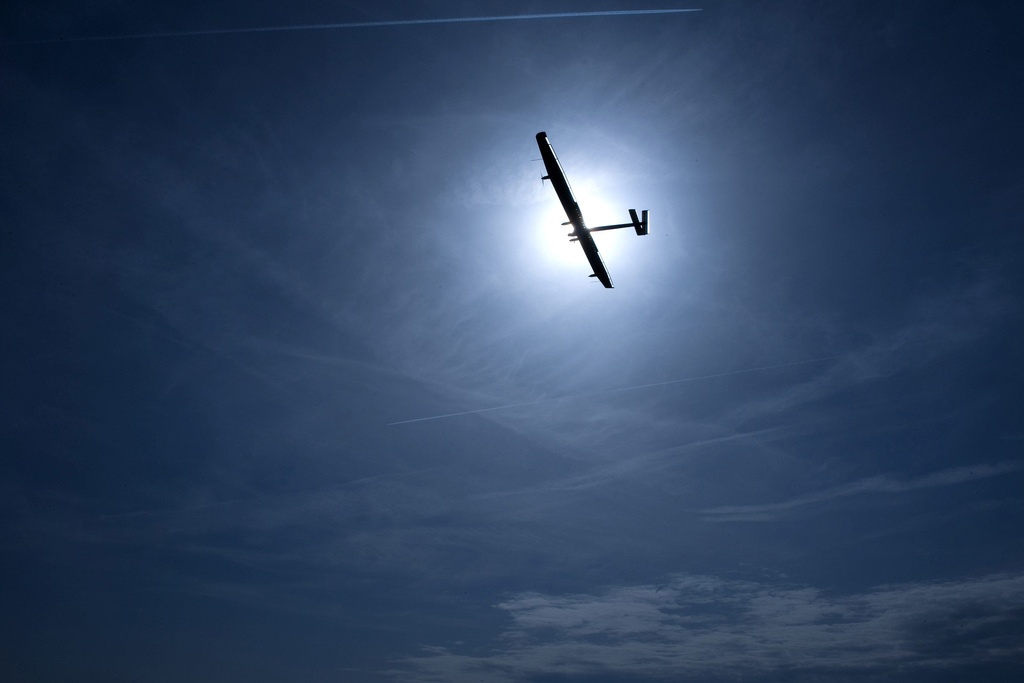
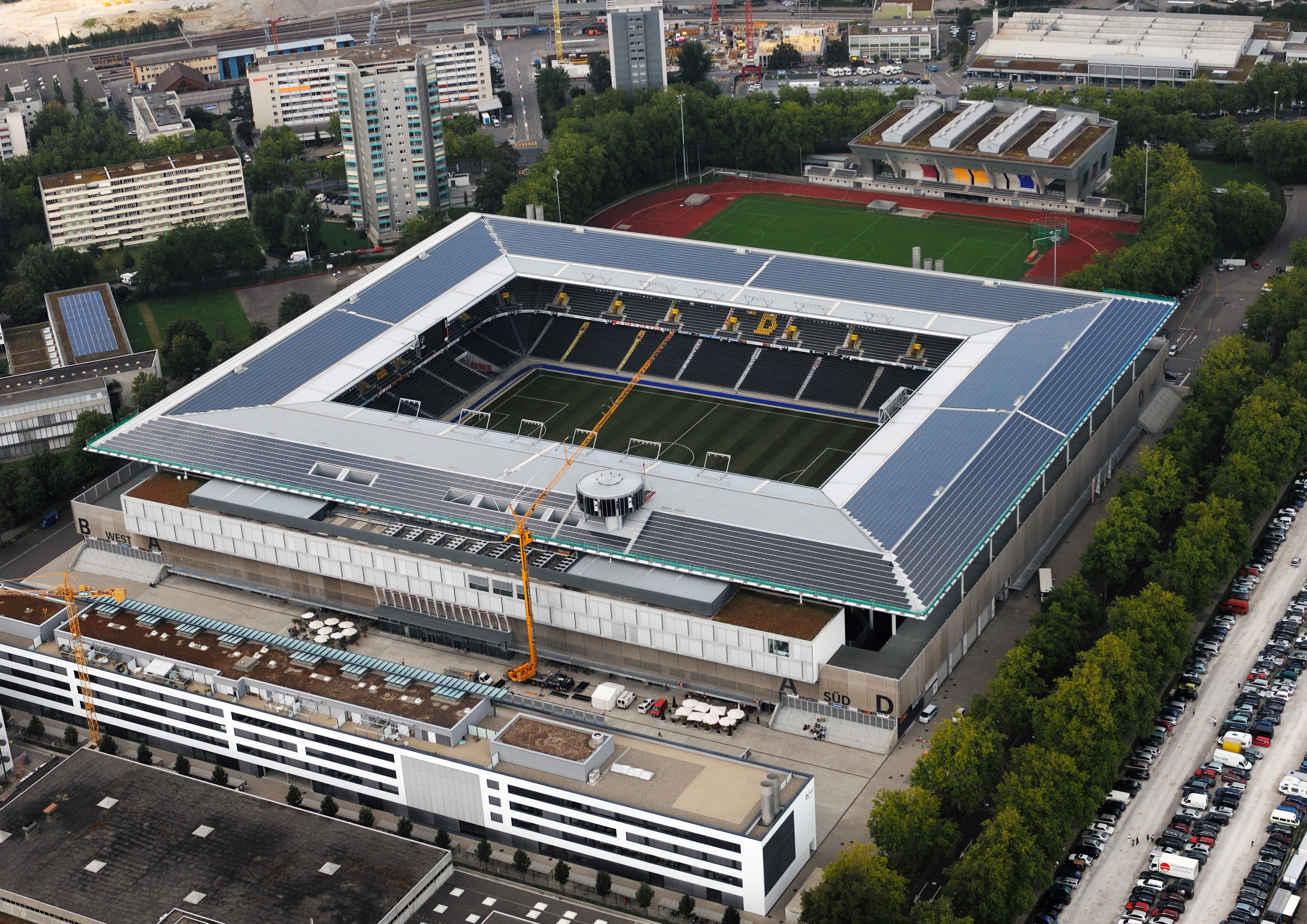

You can find an overview of ongoing debates with our journalists here. Please join us!
If you want to start a conversation about a topic raised in this article or want to report factual errors, email us at english@swissinfo.ch.